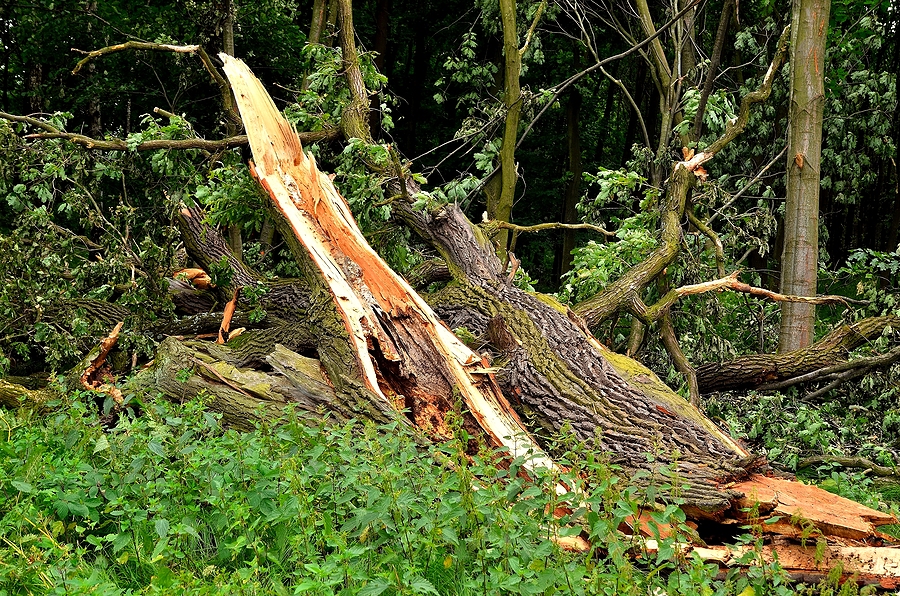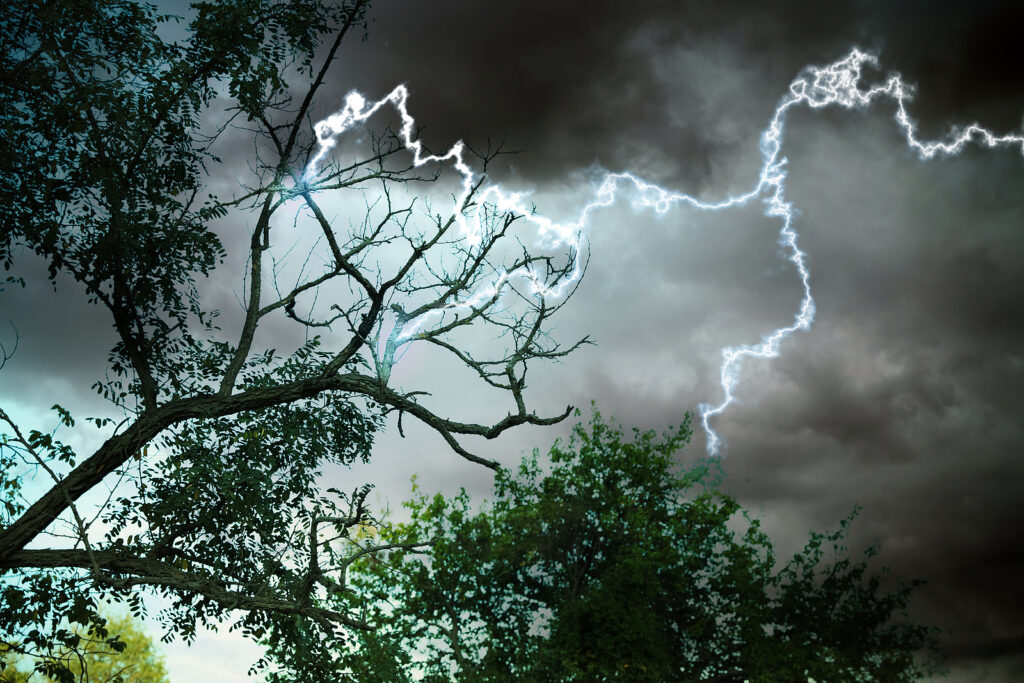The aftermath of a storm can be devastating for your trees. Heavy winds, hail, and lightning can all cause damage to the branches or even topple them completely. If you’ve been hit by a storm recently, you need to act quickly in order to protect your trees from further harm and ensure they recover as best as possible. Continue reading to learn a quick and easy homeowners’ guide for dealing with storm damages to landscaping trees after severe weather.

How Severe Weather Can Damage a Tree
Severe weather with rough winds, hail, and lightning strikes can be disastrous for trees. Not only do strong winds have the potential to break branches or uproot whole trees, but the constant pounding of hail on leaves and bark can cause significant damage to the tree. Additionally, lightning strikes can result in instant tree death or slowly damage the tree over time, making it more prone to disease and insect infestation. Ultimately, the effects of a bad storm can leave a tree vulnerable to further damage and make it difficult for the tree to fully recover.
A Guide for Dealing With Storm Damaged Trees
Storms can cause severe damage to your trees, with strong winds, hail, and lightning posing a threat to their branches. If your area has recently experienced a storm, it’s important to take swift action to safeguard your trees from additional harm and promote their recovery.
Here are five easy steps that will help you get started on the road to recovery after stormy weather damages your trees:
1. Assess the Damage: Immediately after a storm, it’s important to survey the damage and take note of any broken or leaning branches, as well as any signs of disease or insect infestation. If you notice anything abnormal in your trees, call an arborist for help.
2. Remove Debris: Stormy weather can leave behind debris that may be hazardous to your trees if left for too long. Be sure to remove any fallen limbs, leaves, or other debris around the tree in order to protect it from further harm.
3. Prune Away Dead Branches: Pruning away dead wood is essential for preventing decay and promoting healthy growth in a damaged tree. Before pruning, make sure to call a certified arborist for help.
4. Mulch and Water: Adding mulch around the tree’s base can help retain moisture and improve soil health over time. Make sure to regularly water your tree with deep, slow-running water in order to replenish lost nutrients.
5. Add Protection: To protect your trees from further storm damage, consider adding extra reinforcements such as tree stakes or guy wires. Make sure to follow all local building regulations when doing so.
Tree Protection From Storms and Strong Winds is Important
Following these five steps can greatly reduce the amount of damage incurred by stormy weather and ensure that your trees are given every chance to recover quickly and effectively. If you have any questions about how best to care for your damaged trees, don’t hesitate to contact a local tree service company in Indianapolis for advice. With the right knowledge and care, you can help ensure that your trees remain healthy and strong long after the storm is gone.
Did your trees suffer damage from the recent severe storms? Contact Timberland Tree Care at 317-348-0811 for licensed and insured storm damage tree service in Indianapolis, Indiana. We serve residential and commercial customers.
Related Posts:
Preparing Your Trees For Storms: What You Need To Know
How to Prevent Lightning Strikes to Landscaping Trees
Storm Damage Repair Solutions for Trees and Landscaping

